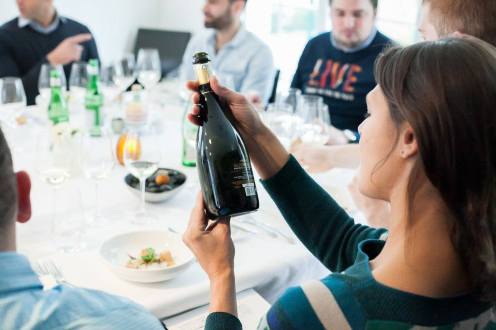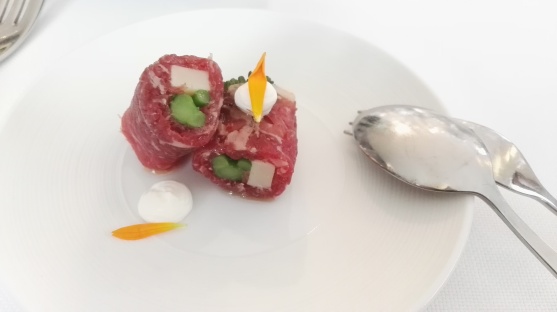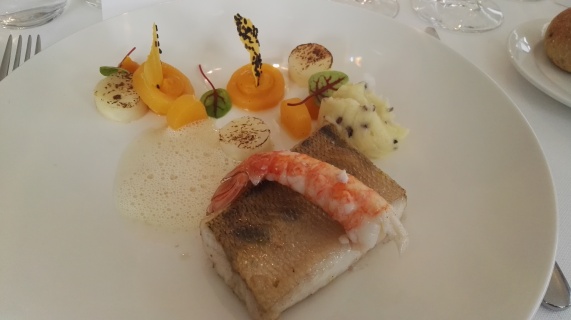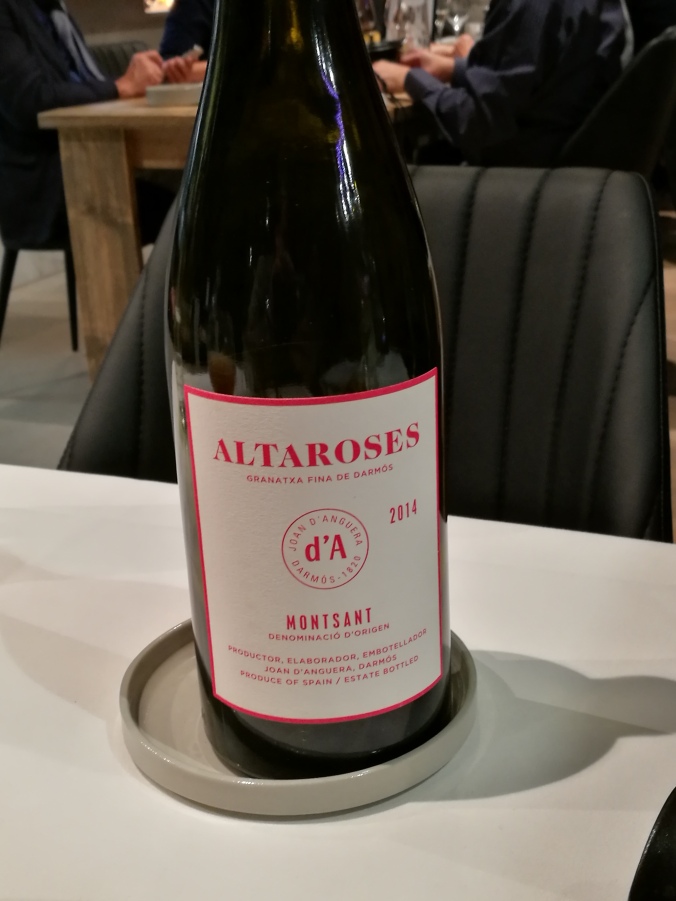When I saw our friends from Young Charly were doing a wine & dine evening with Salomon wines at a South American restaurant (A’sur), I must say I was intrigued to try it. Basically another excuse for a night out with friends 🙂 🙂 . The Salomon Undhof winery is one the most famous names in Austria as they did many important contributions in the Austrian viticulture history. They were one of the first ones to export Austrian wines to the EU and the USA (to give one example). The winery is situated along the Danube River around the twin medieval towns of Krems and Stein, the Kremstal region is right next to the Wachau and the same latitude as Burgundy in fact, Krems is a sister city to Beaune. Not that this is of high importance, but just a nice to know 🙂 Today it is already the 7th generation of the Salomon family who is running the winery and the next generation is ready to continue in their parents’ food steps as it was Fanny-Marie (daughter of current owner) who came to Belgium to present their wines. What is also nice to know is that besides the vineyards in Austria, the family also has vineyards in Australia and New Zealand. The reason why they also have vineyards at the other side of the world, is because the current owner Dr. Bert Salomon had moved there with his family many years ago . But when taking over the reins of the Austrian vineyard from his older brother the family decided to move back to Austria. Although technically speaking they follow the sun as first they do the harvest in Austria and in January/February they do the harvest in Australia and they all move there to help 🙂 That maybe also explains Fanny-Marie’s sunny smile 😉
At the Salomon Undhof winery they only produce 2 types of wine (but of TOP level) Riesling and Grüner Veltliner. The famous Riesling of the estate groes on the top sites of Kögl and Pfaffenberg. The Grüner Veltliner Von Stein comes from the steep terraced hills behind the old town of Stein. The best “loess” soils provide the Lindberg and Wachtberg Grüner Veltliner. All the grapes are harvested traditionally by hand only… so you can imagine the time and effort it takes to produce the wines. At the winery they only use stainless steel tanks, so no wooden barrels that results in intriguing, pure, honest and complex wines that can be drunk immediately.
We started our journey through the Salomon winery with ¨their Grüner Veltliners, the 2016 ‘Wieden’ and 2015 ‘Krems’ that got served with and appetizer with pork belly followed by one of my favorite dishes ever a ceviche from gilt-head bream. The 2016 had a nose of ripe yellow plum. The palate brings more Grüner Veltliner savoriness, with hints of yeast and a bit herby. It is dry in mouthfeel, it refreshes with a lovely herbal citrus tang on the finish. The 2015 (that gets my preference) is juicier with a herbal touch reminiscent of fresh sage and a very savory finish. For the dish the 2016 seemed like a better fit (to me) as it added that extra bit of freshness. Basically wines that ask for sunny weather (just like today… so guess what I’ll be having tonight 😉 )
As a surprise Fanny-Marie had brought a 2009 Krems-Stein Grüner Veltliner. Personally it wasn’t 100% my taste, but for my table guest it was (so it was just me 🙂 ). It was a rich wine with a almost oily texture. In the mouth you notice the intense flavor of ripe fruit with the yellow fruit flavors dominating acidity and peppery taste. Nevertheless my personal opinion, it was a great pleasure to have tasted it. This wine was served with Brussels sprouts South American style 🙂 I didn’t see that one coming .
Now we change our path and move towards the Rieslings, the wines the winery is famous for:-) here we were served the 2016 Riesling ‘Stein a. d. Donau’ and 2015 Pfaffenberg and here again Fanny-Marie had a 1996 Pfaffenberg as a surprise for us. The 2016 Citrus (orangy zest) with a touch of exotic (mango I think it was). Juicy, pleasant fruit sweetness with fine acidity and honey on the finish. With the smell of the 2015 you get an instant feel of happiness in the package 🙂 That and fresh lemon zest notes (aka spring). The palate is so precise, so much tension that you can almost feel the citrus flavors exploding in your mouth. A beautiful aromatic Riesling that can described with words like glorious, long, ripe and freshness. For the 1996 it was more intense apple and mineral flavors that are accented of salt/ peppery notes. A powerful finish though. Wines that went very nice with the seabass we were served.
As I’m not a big cheese fan I skipped the cheese, but got a lovely pineapple dessert to match one of my favorites, the Niepoort Colheita. There were some jealous people around me, I can tell you that 😉
A very nice introduction of wines I didn’t know too much about. Athough you notice that Austrian wines are finding their way more and more towards Belgium… both in restaurants and homes. I can’t wait to discover more of their wines or Austrian wines in general… I think a wine trip to Austria needs to be done!! And who new South America and Austria could walk hand in hand. Thank you to the A’sur team, Young Charly and Fanny-Marie for making this evening possible!!





























































































































